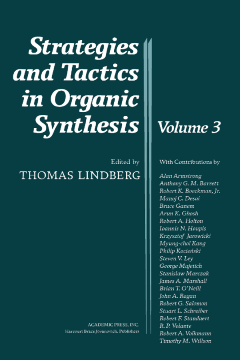
Additional Information
Book Details
Abstract
Strategies and Tactics in Organic Synthesis, Volume 3 provides detailed accounts of interesting advances in the field of synthesis. This book discusses the tasks of multistep synthesis from finding the proper reagents, reaction, and conditions for individual steps to inventing new chemistry to fill gaps in existing synthetic methodology.
Organized into 13 chapters, this volume begins with an overview of the development of redox glycosidation strategy through ester methylenation. This text then examines the development of computer-assisted molecular modeling with applications to a wide range of problems in biological and organic chemistry. Other chapters consider the medicinal significance of ginkgo tree, which has prompted systematic studies to correlate the claimed beneficial effects of its extracts to the active principles. This book discusses as well the biological potency of pentacyclic quassinoids. The final chapter deals with the economic synthesis of a penem antibacterial.
This book is a valuable resource for chemists.
Each author has done a commendable job of bringing the reader into a sense of real interaction with the particular research effort....This book should be read in its entirety by serious students of organic synthesis, which is to say, serious students of organic chemistry.
--JOURNAL OF THE AMERICAN CHEMICAL SOCIETY
The third volume of Strategies and Tactics in Organic Synthesis, edited by Thomas Lindberg, contains detailed accounts of thirteen unusually interesting recent developments in the field of synthesis. Like its predecessors, the book conveys much more of the history, trials, tribulations, surprise events (both negative and positive), and excitement of synthesis that can be found in the original publications of the chemical literature. One can even appreciate the personalities and human events that have shaped the realities of each story. But, above all, each of these chapters tells a tale of what is required for success when challenging problems are attacked at the frontiers ofsynthetic science.
--from the Foreword by E.J. COREY
